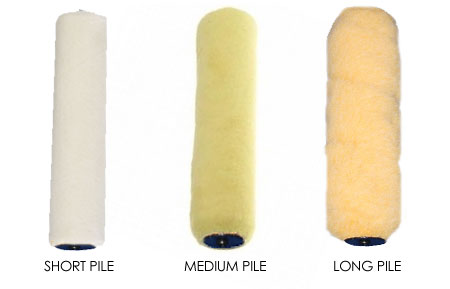Which paint roller should I use?
There's no doubt that paint rollers make painting easier. They spread paint faster than a paintbrush and are far less messy than using a spray system.
Walk into your local Builders Warehouse and you will see a wide selection of paint rollers. So how do you know which is the right paint roller for the project at hand?
The main difference between paint rollers is the pile or nap (thickness and length of material that covers the roller), as well as the material used for the nap. Most rollers are covered in either synthetic or wool and there can be a big difference in price between these two.
Short nap or long nap?
The first thing to bear in mind when choosing a roller is - the rougher the surface of the wall the longer and thicker the pile.
When to use a short pile paint roller
A short pile roller is generally used for smooth or flat walls, or for drywalls. Less paint is taken up by the roller, allowing for easy application onto flat walls.
When to use a medium pile paint roller
Use a medium pile paint roller for lightly textured walls and for ceilings. Even on smooth ceilings it's a good idea to use a medium pile roller, which picks up quite a bit of paint and allows you to paint over a larger area in one go.
When to use a long pile paint roller
A long pile paint roller is perfect for painting on medium and heavily textured walls. This roller pulls up quite a bit of paint from the paint tray, and the long nap ensures that paint is applied easily onto textured surfaces.
Synthetic of natural paint roller
Paint rollers with synthetic pile are generally cheaper - but not always better. A cheap synthetic pile roller can often shed fibres onto the painted surface, spoiling a paint job. Synthetic paint rollers are ideal for oil-based paints, but bear in mind that it's easier to throw these away when finish, as cleaning can be a messy process. Sheepskin and wool paint rollers, while more expensive, will leave a blemish-free finish for paint jobs. A natural paint roller also holds more paint than a synthetic paint roller and do not splash as much.
Cleaning a paint roller
Fill a bucket with warm, soapy water and let the paint roller sit in this for 10 minutes. This will help to loosen the paint and allow for easier rinsing under the tap. You need to remove all paint, as the pile will become stiff if you don't. Hang the roller outside to dry and then fluff up the pile before storing.

